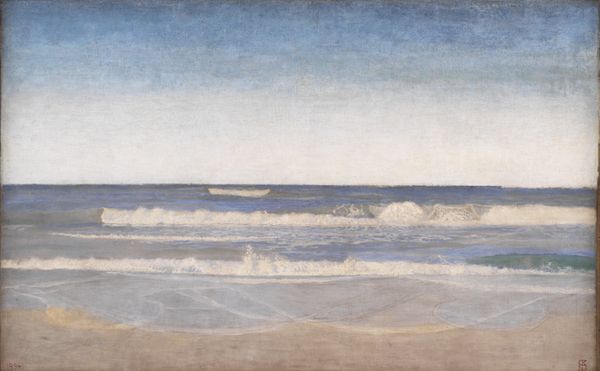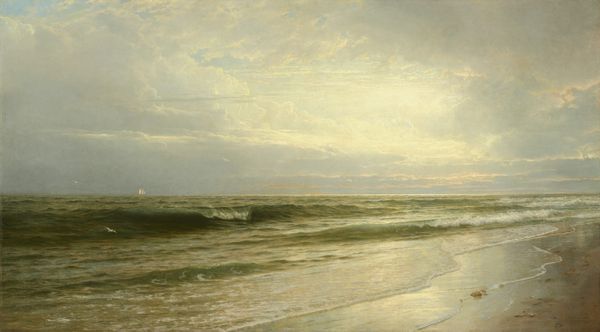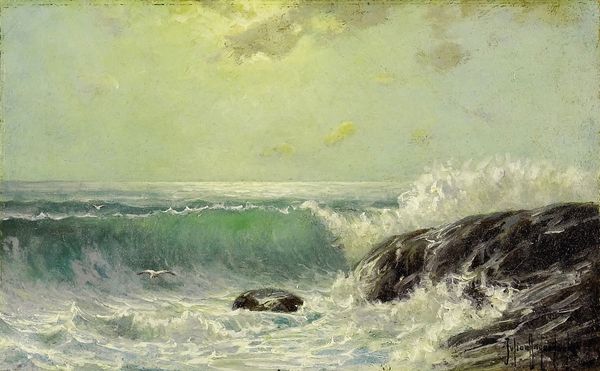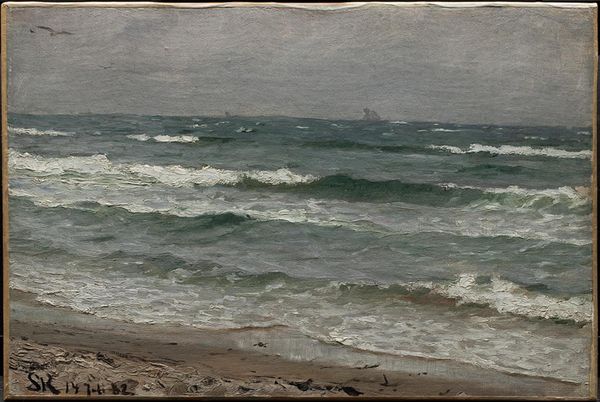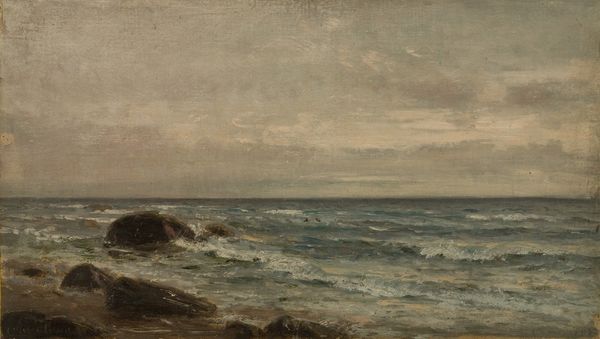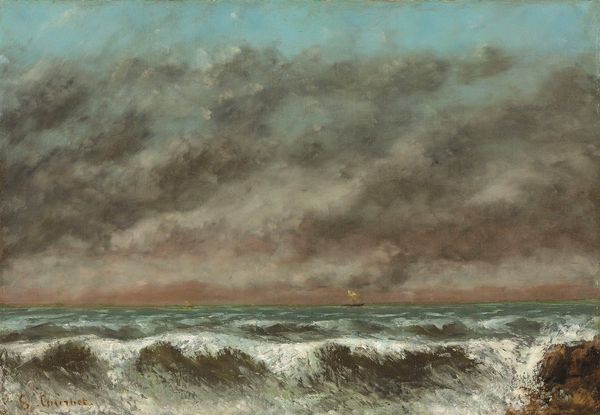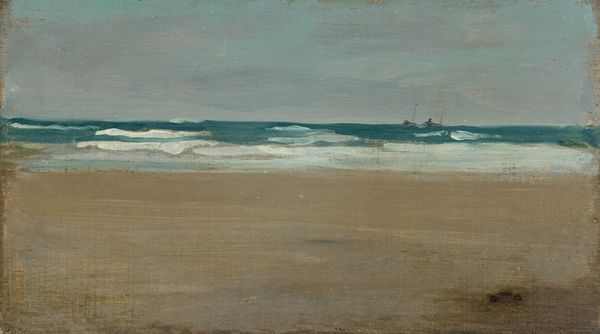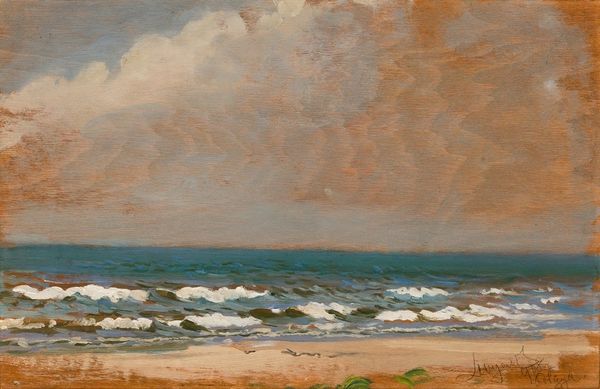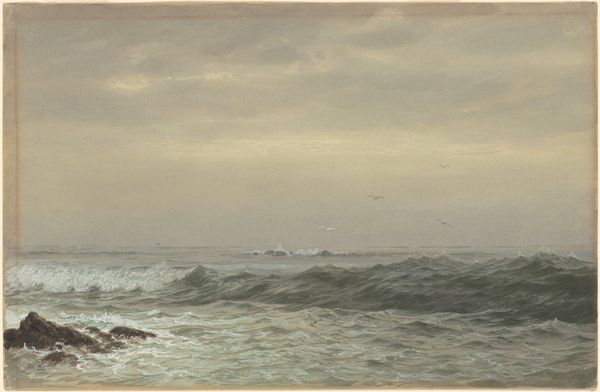
Dimensions: 56.5 cm (height) x 127 cm (width) (Netto)
Editor: We're looking at "Grey Weather Day by the North Sea with Breakers," an 1890 oil painting by Thorvald Niss. It feels melancholic, almost like a memory of a stormy day. What do you see in this piece? Curator: I see the weight of history, both natural and cultural. The ocean, a timeless symbol of power and mystery, meets the shore in an endless cycle of destruction and creation. Note how Niss captures the turbulent water. Consider the symbols; the sky is heavy with what Jung would call repressed emotion, a sense of foreboding hanging over the scene. Does the lonely rock remind you of anything? Editor: Maybe a kind of resilience? It stands firm against the waves. Is that accurate for this time and place? Curator: Precisely. In late 19th century Denmark, the Vesterhavet, or North Sea, represented both opportunity and danger. Fishing was a vital industry but claimed many lives. So the enduring rock, seemingly unmoved, acts as an enduring cultural symbol of resistance, of what is to remain and to carry cultural memory despite hardship. Do you notice how that rock mirrors in color the darker part of the sky? Editor: I didn’t at first. That dark palette overall…does that connect to anything specific about the cultural moment? Curator: Indeed. The somber tones mirror a prevailing sense of Romanticism, perhaps also an existential yearning prominent in Scandinavian art. Niss uses this palette to evoke shared feelings related to living on this land. Editor: That’s fascinating. It definitely changes how I view the piece. It's not just a seascape, but a kind of portrait of a cultural memory. Curator: Precisely. Symbols, colours, shapes… they resonate across time, weaving together the landscape and the psyche.
Comments
No comments
Be the first to comment and join the conversation on the ultimate creative platform.

